|
Monday 30th August
to Sunday 5th September 2021 |
| |
|
Tuesday 31st August see the peak of
the lesser-known Aurigid meteor shower with a predicted zenith hourly rate
of 50 to 100 meteors. You will need to be looking at the constellation of
Auriga towards the north east between 10 and 11pm. |
| |
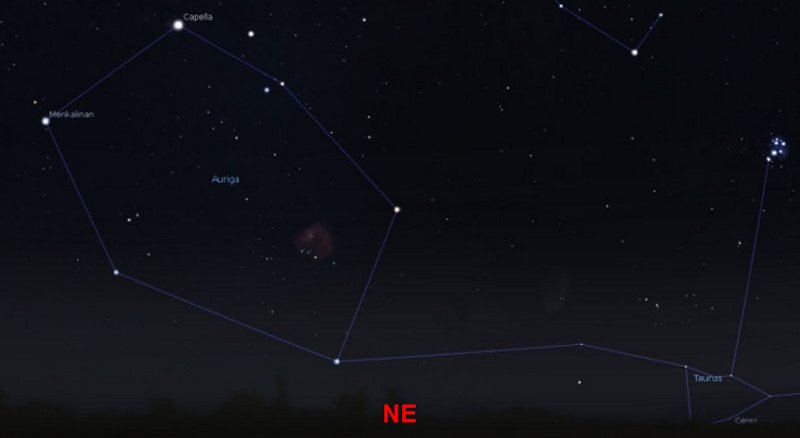 |
| |
| |
|
If you struggle to find the constellation,
look further east and spot the Pleiades open cluster of stars first. Auriga
has the 6th brightest star Capella at the top of it. Slightly down and to
the left is another star called Menkalinan and the radiant point of the
meteor shower is below that. |
| |
|
Fortunately, the Moon doesn't rise above the
horizon until 11.45pm so it won't be producing any light pollution to spoil
your view of any meteors. It would be a good idea to go outside a bit
before 10pm to give your eyes time to become adapted to the dark. |
| |
|
I'm often asked about the difference between
a meteor, a meteorite and a shooting star. A meteor is a piece of space
debris that is burning up in the Earth's atmosphere due to friction as it
collides with air molecules. This typically occurs in a part of our
atmosphere known as the Mesosphere, at an altitude of about 100Km. |
| |
|
If any of the meteor survives the fiery
journey and actually makes it to Earth, that is called a meteorite. A
shooting star is simply the colloquialism for a meteor, because that's what
it looks like! A fireball is a brighter-than-average meteor. |
|
Monday 23rd to
Sunday 29th August 2021 |
| |
|
If you look towards the
west at around 10pm, you should be able to see the constellation of
Hercules. Two thirds of the way up the right hand side of the 4 stars that
make up the "keystone" shape in the constellation is M13, the best globular
cluster visible in the northern hemisphere. |
| |
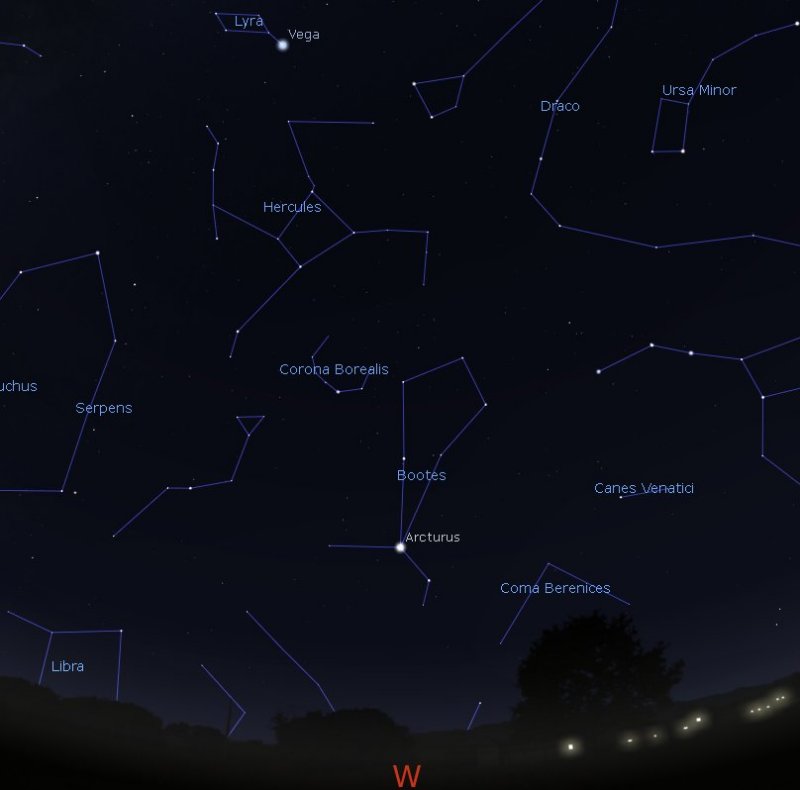 |
| |
| |
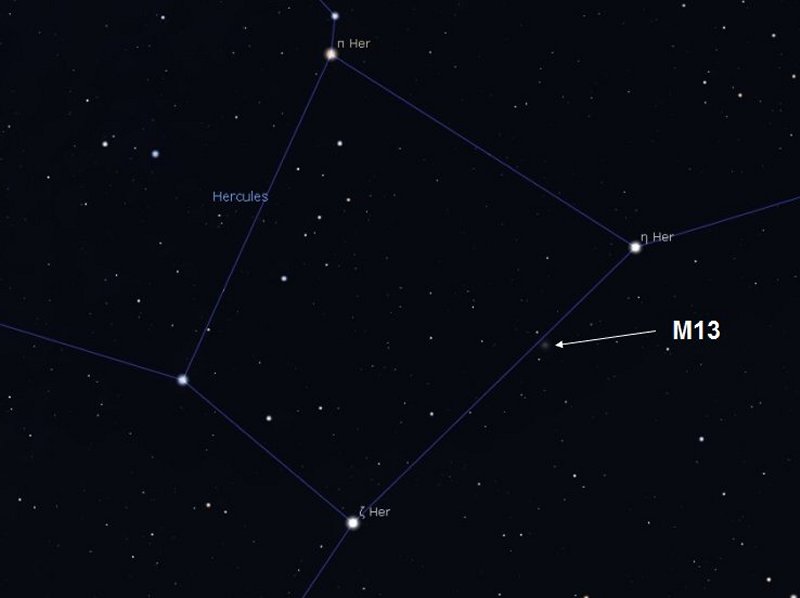 |
| |
| |
|
The cluster is composed of hundreds
of thousands of stars and is approximately 22,000 light years away from us.
If you are in a very dark location, the cluster is just visible with the
naked eye, but better to use binoculars or a telescope. |
| |
|
In 1974, a message containing
information about the human race was beamed towards M13 from the radio
telescope at Arecibo. Travelling at the speed of light, it's going to be
quite a while before any aliens receive the message and then another 22,000
years before we hear a reply! |
| |
|
While your waiting, look
above Hercules towards the constellation of Lyra and spot the bright star
Vega. Just to the left of the bright star Vega in Lyra is the multiple star
system Epsilon Lyrae often called the "Double-Double". With binoculars a
binary star is seen, but when observed with a telescope, each of these two
stars is revealed to be a double star - hence the name! |
| |
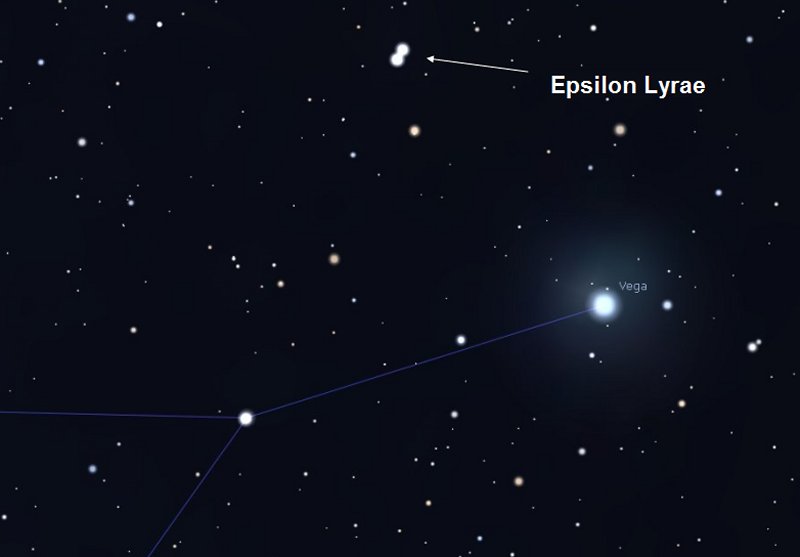 |
|
Monday 16th to
Sunday 22nd August 2021 |
| |
|
Saturday 21st sees a Full Moon
rising in the south east from around 9pm. To the left of the Moon will be
planet Jupiter and to the right of the Moon, Saturn. |
| |
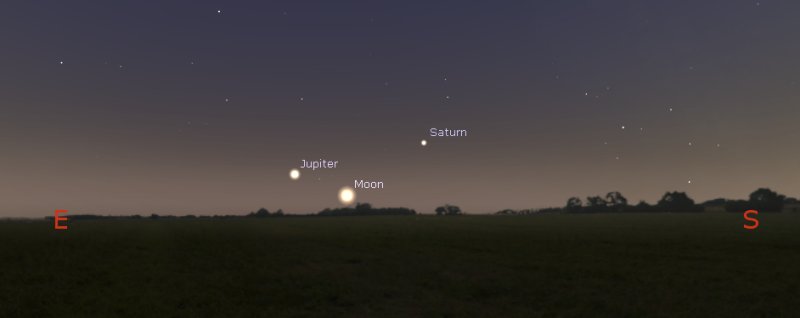 |
| |
| |
|
It's probably not the best time to
dig out your telescope to view Saturn's rings as light pollution from the
Full Moon will ruin the contrast of the rings. However, the following day
Sunday 22nd it will be worth using your telescope to spot something unusual
happening with Jupiter's Galilean moons. |
| |
|
On the Sunday,
Jupiter will rise above the horizon just before the bright, almost-Full
Moon. At that moment, just before 9pm, two of Jupiter's moons will be
transiting the planet at the same time - both Europa and Ganymede will cast
shadows on the planet's surface. Io will be slightly to the left of
Jupiter, with Callisto much further away to the right. |
| |
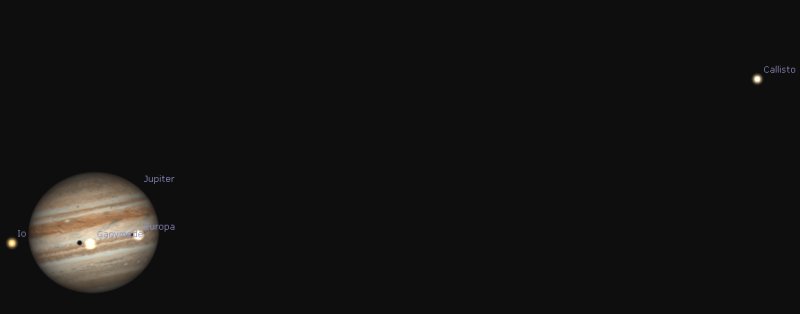 |
| |
| |
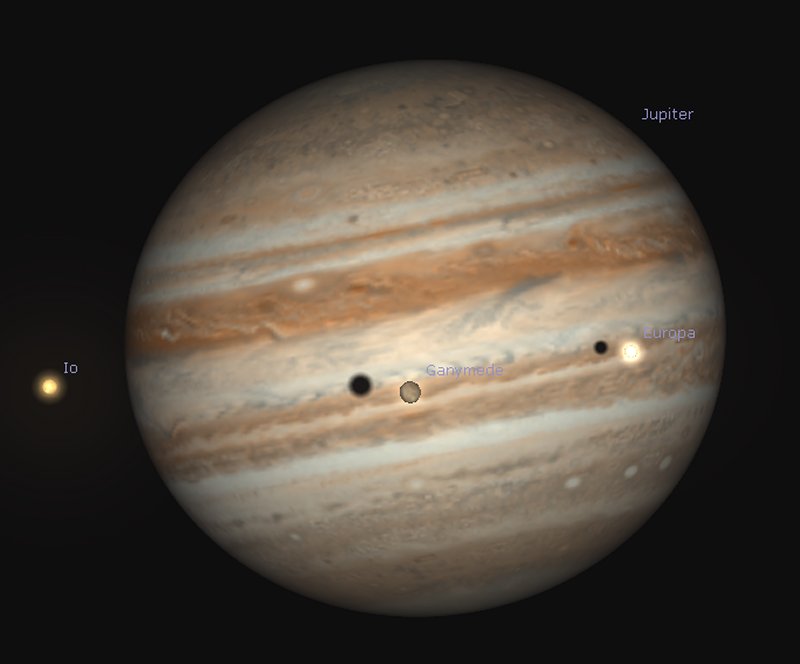 |
| |
| |
|
Jupiter has 53 named moons and
scientists have discovered a further 26 that are awaiting names. The four
largest that I've just mentioned were first discovered by the Italian
astronomer Galileo back in 1610 and made him realise that our Solar System
is "helio-centric" with the Earth rotating daily and orbiting around the
Sun. |
| |
|
His ideas contradicted scientific
thinking of the time and he was tried by inquisition. Poor Galileo was
found guilty of being "vehemently suspect of heresy". As a result, he was
forced to withdraw his theory and spent the rest of his life under house
arrest. Of course as the 17th Century progressed, other scientists proved
that the helio-centric model was correct, but sadly too late for Galileo who
passed away in 1642. Many consider him to be the "father of modern
science". |
|
Monday 9th to
Sunday 15th August 2021 |
| |
|
Just after sunset on Tuesday 10th or
Wednesday 11th, look towards the west and you will see a thin waxing
Crescent Moon with planet Venus a little
to the left of it. |
| |
|
Please remember that if you are using
binoculars or a telescope to get a better view, never ever point them
towards the setting Sun! Wait until it has totally disappeared below the
horizon. |
| |
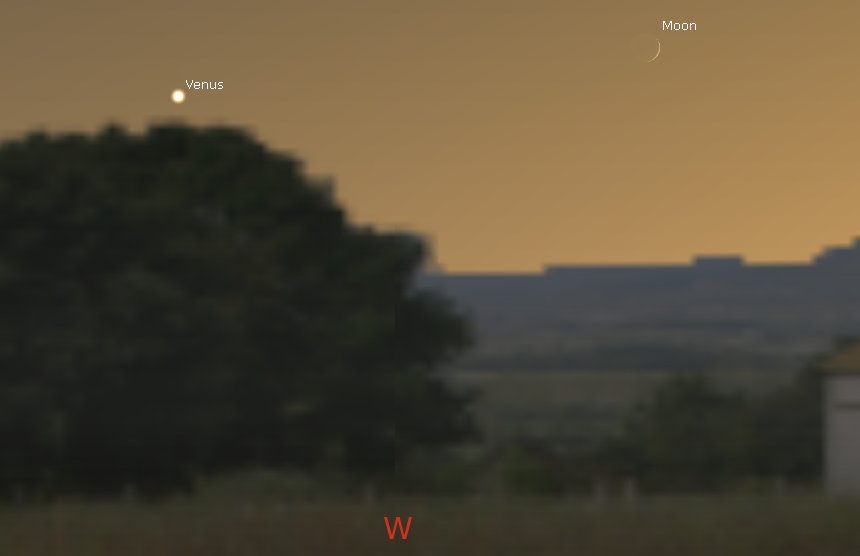 |
| |
| |
|
Thursday 12th sees the peak of the Perseids
meteor shower around 11pm. Look towards the north east, a little below the
constellation of Cassiopeia and above Perseus. Cassiopeia is easy to spot
as it has an obvious "W" shape. |
| |
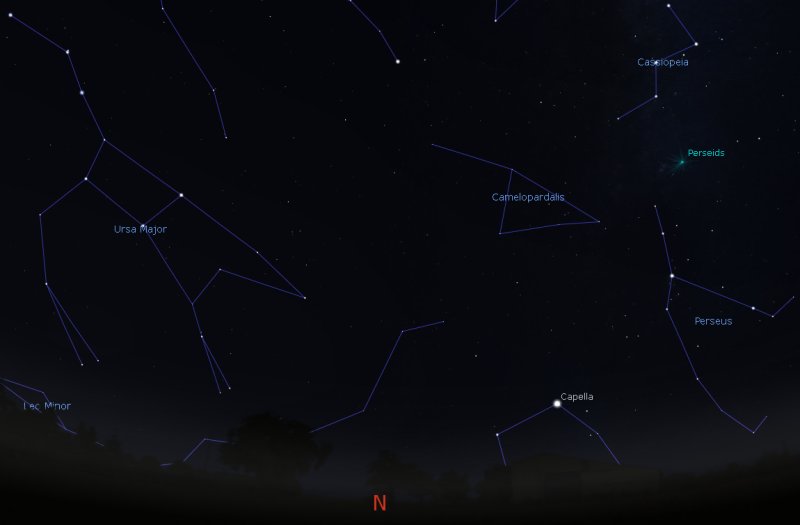 |
| |
| |
|
The meteors will appear to originate from a
single area of the sky and this is called the radiant point. Meteor showers
are named after the constellation where the radiant point is located, so no
prizes for guessing why this shower is called the Perseids! |
| |
|
Meteor showers occur at the same time every
year - as the earth orbits the Sun, it passes through the debris left by a
comet and in the case of the Perseids, it is comet Swift-Tuttle that takes
133 years to orbit the Sun - it last swept in from the outer reaches of the
Solar System in 1992 so it will be a while before we can see the actual
comet again! |
|
Monday 2nd to
Sunday 8th August 2021 |
| |
|
If you stay up
into the early hours of Thursday morning 5th August, you will see a 12% lit
Crescent Moon rise above the horizon to the east north east. To the right
of the Moon, almost due east will be the constellation of Taurus with the
bright star Aldebaran. |
| |
|
Above Aldebaran
will be the open cluster of stars known as the Pleiades or M45. As the
Pleiades is only 400 light years away from us, it is quite bright with a
magnitude of 1.6, so is easy to spot with the naked eye. |
| |
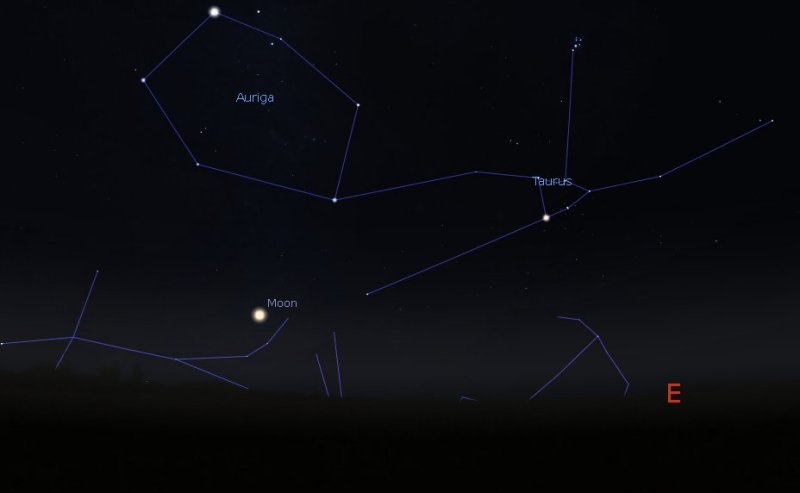 |
| |
| |
|
At the same
time, if you have your telescope handy, another open cluster of stars known
as M35 will be a little to the right of the Moon. This cluster is much
fainter as it is over 3800 light years away. |
| |
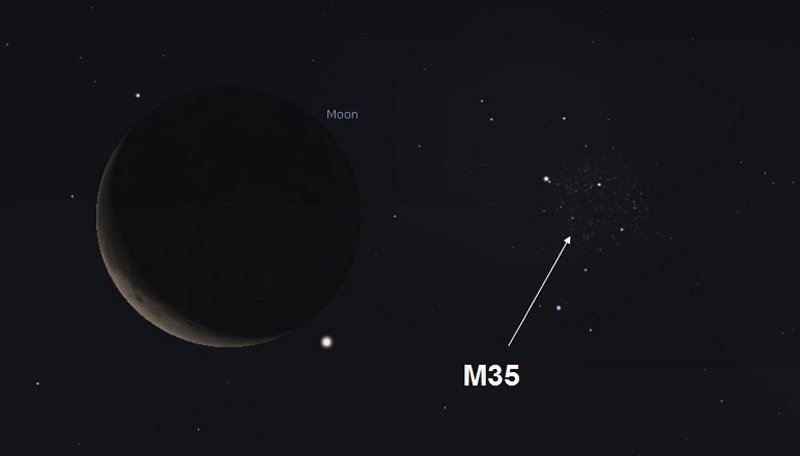 |
| |
| |
|
Immediately to
the south west of M35 is another open cluster known as NGC2158 - it doesn't
have an "M" number as Charles Messier never discovered it. |
| |
|
Unfortunately
NGC2158 is even harder to see because it is actually 9000 light years
further away than M35 - the two clusters only appear close together because
you are looking at everything in two dimensions - this occurs due to them
being so far away from Earth that there is no depth perception. |










